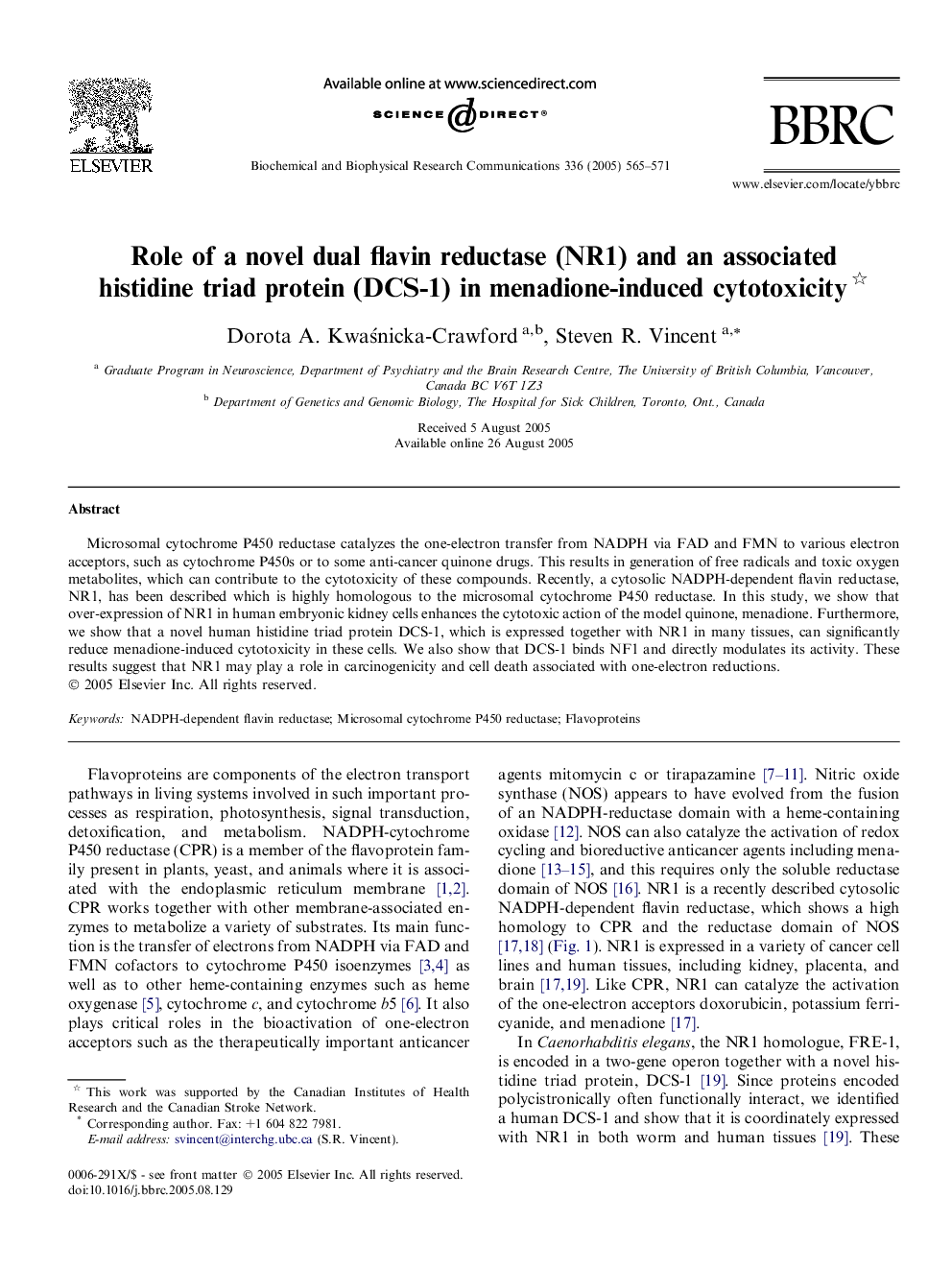| کد مقاله | کد نشریه | سال انتشار | مقاله انگلیسی | نسخه تمام متن |
|---|---|---|---|---|
| 10769585 | 1050823 | 2005 | 7 صفحه PDF | دانلود رایگان |
عنوان انگلیسی مقاله ISI
Role of a novel dual flavin reductase (NR1) and an associated histidine triad protein (DCS-1) in menadione-induced cytotoxicity
دانلود مقاله + سفارش ترجمه
دانلود مقاله ISI انگلیسی
رایگان برای ایرانیان
کلمات کلیدی
موضوعات مرتبط
علوم زیستی و بیوفناوری
بیوشیمی، ژنتیک و زیست شناسی مولکولی
زیست شیمی
پیش نمایش صفحه اول مقاله

چکیده انگلیسی
Microsomal cytochrome P450 reductase catalyzes the one-electron transfer from NADPH via FAD and FMN to various electron acceptors, such as cytochrome P450s or to some anti-cancer quinone drugs. This results in generation of free radicals and toxic oxygen metabolites, which can contribute to the cytotoxicity of these compounds. Recently, a cytosolic NADPH-dependent flavin reductase, NR1, has been described which is highly homologous to the microsomal cytochrome P450 reductase. In this study, we show that over-expression of NR1 in human embryonic kidney cells enhances the cytotoxic action of the model quinone, menadione. Furthermore, we show that a novel human histidine triad protein DCS-1, which is expressed together with NR1 in many tissues, can significantly reduce menadione-induced cytotoxicity in these cells. We also show that DCS-1 binds NF1 and directly modulates its activity. These results suggest that NR1 may play a role in carcinogenicity and cell death associated with one-electron reductions.
ناشر
Database: Elsevier - ScienceDirect (ساینس دایرکت)
Journal: Biochemical and Biophysical Research Communications - Volume 336, Issue 2, 21 October 2005, Pages 565-571
Journal: Biochemical and Biophysical Research Communications - Volume 336, Issue 2, 21 October 2005, Pages 565-571
نویسندگان
Dorota A. KwaÅnicka-Crawford, Steven R. Vincent,